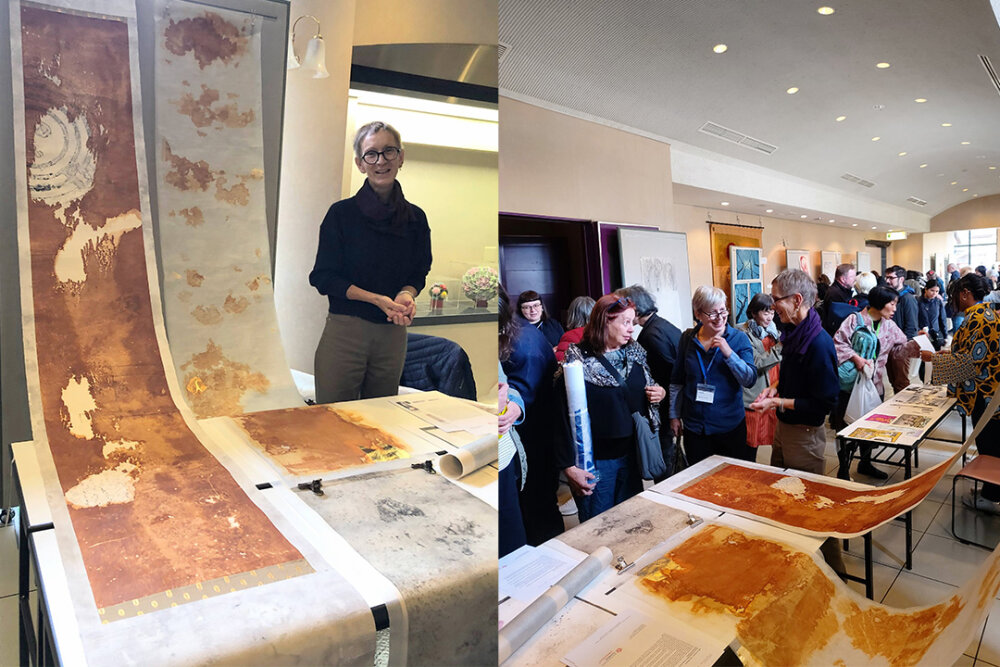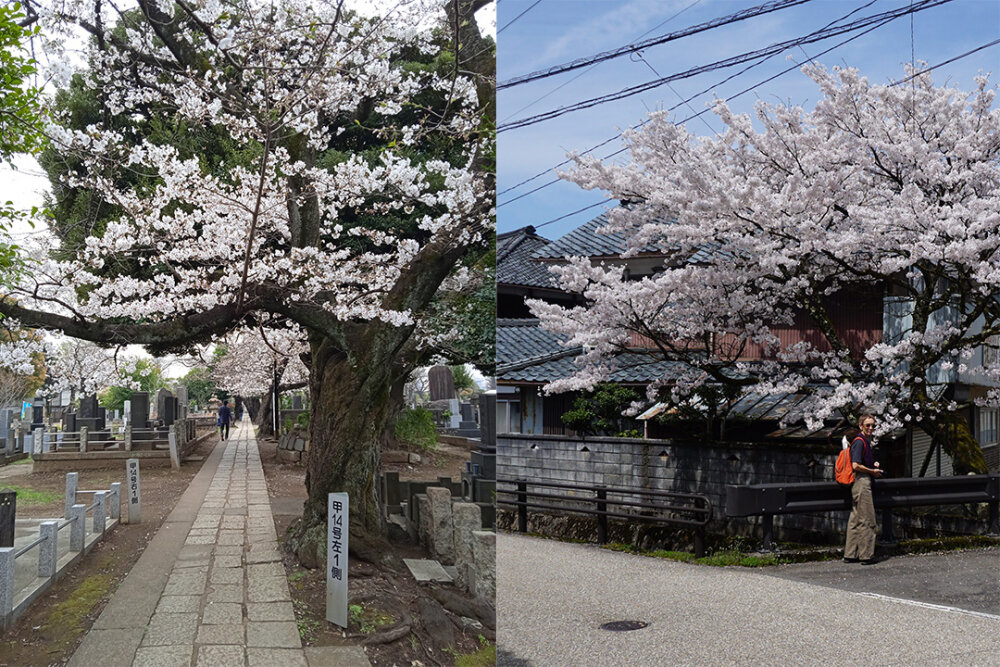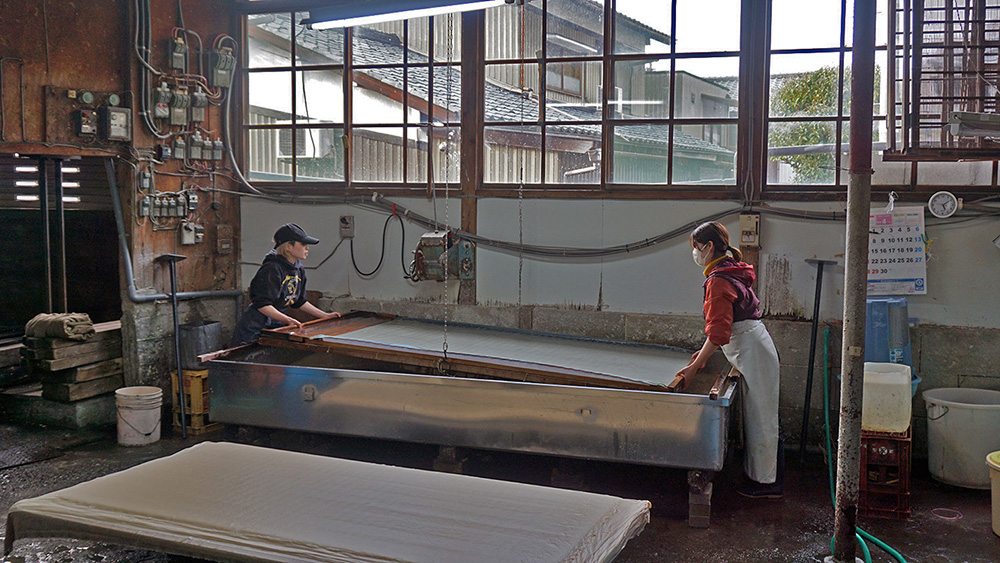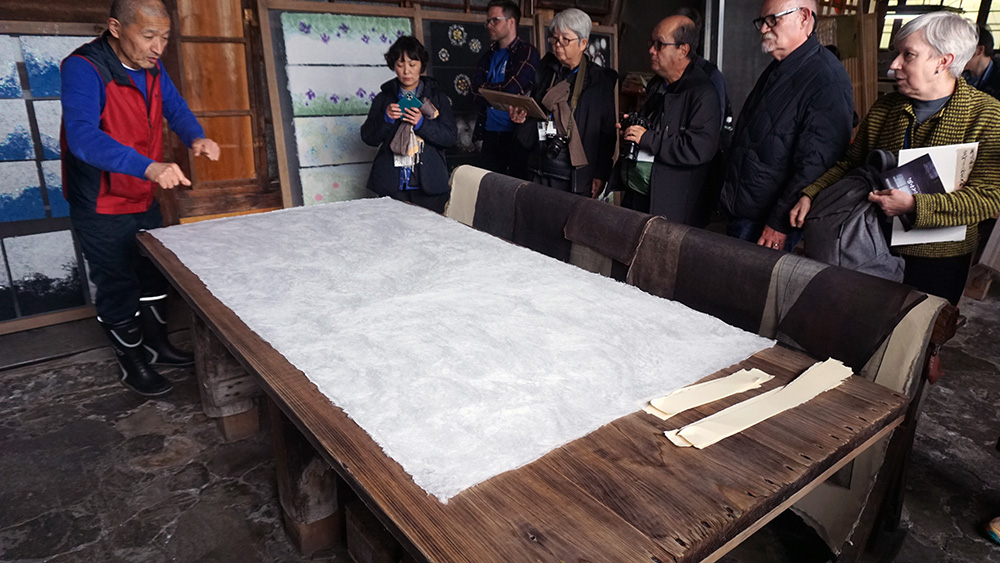
The International Mokuhanga Association conference was a chance to meet other mokuhanga practitioners and learn about their work
I've been a practicing artist for over 25 years, but in 2016 my focus shifted to mokuhanga, Japanese woodblock printing. Two years later, my journey led me to the International Mokuhanga Innovation Laboratory (Mi-lab) in Japan, where I connected with a global network of practitioners.
This year marked my first opportunity to attend the International Mokuhanga Association triannual conference in person. An opportunity made possible by an Asia New Zealand Foundation Arts Practitioners Grant.
I came to mokuhanga from a general art practice in drawing, painting, assemblage and installation. I started exploring print as a medium to document and support the concepts and development of my installations.
Artist Lee Ufan says about his print practice in the book Lee Ufan Prints: “… before making a painting, sculpture or drawing, I often first work on prints that are made by the relations between myself and other people, machines and materials ...”
Used to the immediacy of painting and not happy with “ the machinery” (printing press) and the materials like solvents and mdf plates, I was looking for a more accessible and sustainable printing technique. I attended my first mokuhanga workshop with Roslyn Kean at the Australian Print Workshop, and my ‘general art practice’ went straight out of the window after that.

In Japan, Sybille got to take in the late blooming of cherry blossoms
Arriving in Japan, I was greeted by a late cherry blossom. With some time up my sleeve before the conference, I indulged in the tradition of 'hanami' - wandering through Yanaka cemetery amid flowering cherry trees, sharing smiles with fellow daydreamers beneath the trees. Welcome to Tokyo!
After a brief catch-up with artist friends and a restful night's sleep, I embarked on an early train journey to Echizen - a small city on Japan's west coast.
The journey was punctuated by the sight of cherry blossoms in full bloom and ended at a brand-new Shinkansen train station amid rice fields.

Attendees of the conference got to visit artisan workshops where specialist paper is produced
The structured part of the conference, consisted of various workshops, papers, guided tours, and satellite events that could be visited or attended at leisure.
The opening reception was an opportunity to meet the local community, enjoy delicious cuisine from the region, connect with old friends and meet new ones.
Visiting galleries with mokuhanga exhibitions was inspiring.
Japanese paper, or washi, was at the centre of the conference, and I was most impressed with the papermills we visited on a guided tour.
We could observe the making of sheets up to 270 x 380cm in size at Iwano Heizaburou papermill, produced for fine art painting, printing and calligraphy.
At Yanase washi paper mill, a range of ‘cloud’ papers in different colours, made from coloured or pure white mulberry fibre pulp was a highlight.
This paper is usually used for shoji screens, and I look forward to seeing how it works in my printing practice.
It is amazing to see the passion, skill, and knowledge passed down over generations.
According to legend, a woman came down the river one day about 1500 years ago and was moved by the hardship the people of the region endured due to the difficulties in cultivating rice in the area.
She taught them to make paper instead, and when asked who she was or where she came from, she just answered, “I am from up the stream,” and disappeared.
They called her Kawakami Gozen, “Princess from upstream”. A shrine has been built in her honour, Okamoto Shrine. And it is still customary for women to make the paper.
The conference opened opportunities to meet practitioners from Japan, Australia, Taiwan, Ireland, the Philippines, and the United States, among others, and exposure to a wide range of practices and concepts rooted in the same technique was plainly exhilarating.
To accommodate the availability of materials in their respective home countries, artists I met adapted their practices based on their conceptual thinking, cultural background and history.
An organised social evening in town included dance, koto [Japanese stringed instrument] performances, and a nightly viewing of a magnificent blooming weeping cherry tree at the Midō Yōganji Temple.
I found time to create personal and professional connections with papermakers and artists who share a passion for hand-made Japanese paper, taking traditional and innovative approaches.

Learning about how high-quality Japanese paper is produced by artisan paper makers was a highlight for Sybille
As always, personal encounters made the experience: The kindness of a local translator who took me to a local paper maker whose paper I admire, and the passion of an ambassador of washi makers in a particular region.
I look forward to building upon the connections I made during my time in Echizen; the insights and knowledge I gained already flow into my practice.
I hope to return, deepen my understanding of Japanese paper, and develop skills in its making.
The Foundation's arts programme aims to bring Asia into the mainstream of New Zealand arts by inspiring New Zealand arts professionals to grow their connections and knowledge of Asia. It also supports the presentation of Asian arts in partnership with New Zealand arts organisations and events.
Our Arts Practitioners Fund provides support for experiential opportunities for individual New Zealand-based arts practitioners to deepen artistic and professional connections with Asia, including residencies, work placements, research tours and exchanges.


